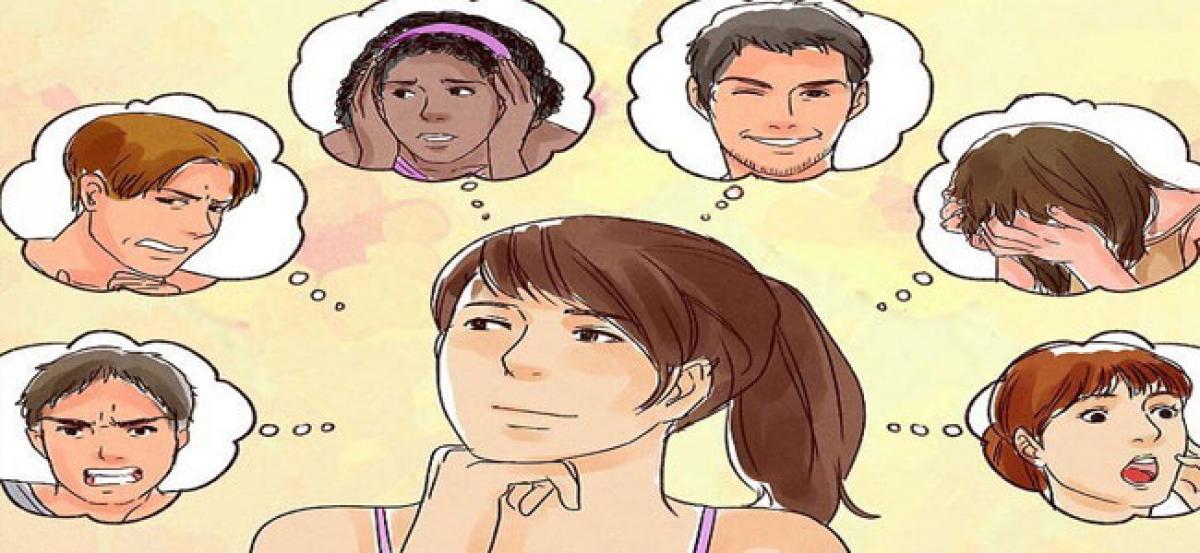Live
- Goa Aces clinch Indian Racing League title
- Study finds how hormone therapy can reshape the skeleton
- High-street fashion players looking at India for manufacturing: Report
- Shreyas Iyer to lead Mumbai as Prithvi Shaw returns for Syed Mushtaq Ali Trophy
- 'Failed to resolve crisis': NPP withdraws support from BJP govt in Manipur
- Chennai: Actress Kasturi Remanded in Custody Until 29th of This Month
- Aaqib Javed likely to become Pakistan's new white-ball head coach
- BJP panel to draft poll charge sheet against AAP govt in Delhi
- Allu Arjun Thanks Fans in Patna, Teases 'Pushpa 2' Release
- Japan to strengthen measures against illegal part-time jobs
Just In

Our emotional state in a given moment may influence what we see, according to a study which shows that humans are active perceivers. The findings published in the journal Psychological Science could have implications that extend from everyday social interactions to situations with more severe consequences.
Los Angeles: Our emotional state in a given moment may influence what we see, according to a study which shows that humans are active perceivers. The findings published in the journal Psychological Science could have implications that extend from everyday social interactions to situations with more severe consequences.
For instance, they could be useful when judges or jury members have to evaluate whether a defendant is remorseful, researchers said. In two experiments, they found that participants saw a neutral face as smiling more when it was paired with an unseen positive image.
"We do not passively detect information in the world and then react to it - we construct perceptions of the world as the architects of our own experience. Our affective feelings are a critical determinant of the experience we create," said Erika Siegel, a psychological scientist at University of California, San Francisco in the US. "That is, we do not come to know the world through only our external senses - we see the world differently when we feel pleasant or unpleasant," she said.
In previous studies, Siegel and colleagues found that influencing people's emotional states outside of conscious awareness shifted their first impressions of neutral faces, making faces seem more or less likeable, trustworthy, and reliable. In the latest research, they wanted to see if changing people's emotional states outside awareness might actually change how they see the neutral faces.
Using a technique called continuous flash suppression, the researchers were able to present stimuli to participants without them knowing it. In one experiment, 43 participants had a series of flashing images, which alternated between a pixelated image and a neutral face, presented to their dominant eye.
At the same time, a low-contrast image of a smiling, scowling, or neutral face was presented to their non-dominant eye - typically, this image will be suppressed by the stimulus presented to the dominant eye and participants will not consciously experience it.
At the end of each trial, a set of five faces appeared and participants picked the one that best matched the face they saw during the trial. The face that was presented to participants' dominant eye was always neutral.
However, they tended to select faces that were smiling more as the best match if the image that was presented outside of their awareness showed a person who was smiling as opposed to neutral or scowling. In a second experiment, the researchers included an objective measure of awareness, asking participants to guess the orientation of the suppressed face.
Those who correctly guessed the orientation at better than chance levels were not included in subsequent analyses. Again, the results indicated that unseen positive faces changed participants' perception of the visible neutral face.

© 2024 Hyderabad Media House Limited/The Hans India. All rights reserved. Powered by hocalwire.com







